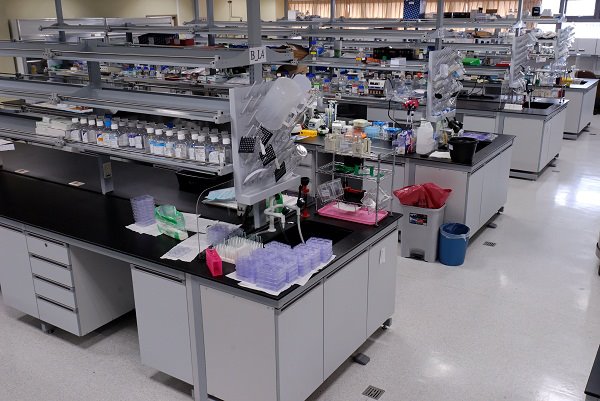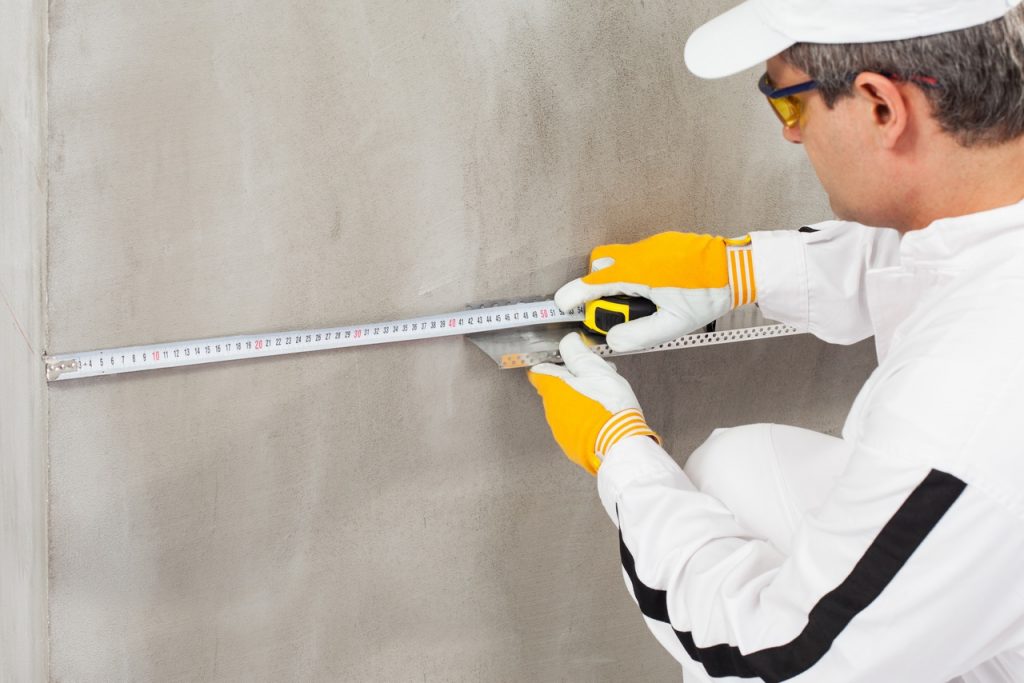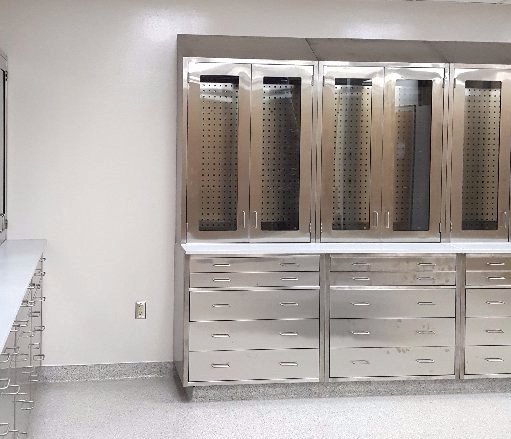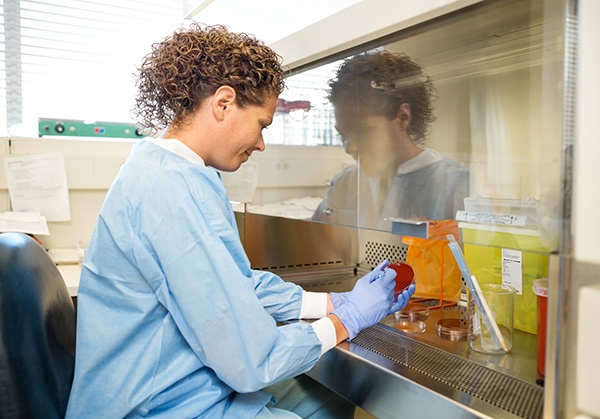In today’s world, most business operations are trending toward sustainable, energy efficient practices. And it makes sense: it saves money to run operations efficiently, it saves the company time, and it’s better for the environment. What’s more, sustainability focuses on keeping operations running and relevant for a longer period of time. So it’s no surprise that laboratories are jumping on the sustainability train too. Labs are historically one of the most expensive business operations to run, so anything that can be done to make them more efficient, streamlined, and functional for longer periods of time, is a big help.
Sustainable labs all start with design. If you’re considering upgrading your lab to become more sustainable, or if you’re building a new, sustainable lab, here are 5 design considerations you’ll want to keep in mind to ensure you have the most efficient lab out there when you’re done:
HVAC Systems that are the right size
In the past, it was common to install an HVAC system that could handle an extreme situation or significant overloads, but in most cases, these emergencies never happened. While it’s great to be prepared for something out of the ordinary to happen, you’re paying to run all of that extra power 24/7, when you never end up needing it. Today, lab design focuses more on affordable sustainability, which means choosing an HVAC system appropriate to the actual size of the laboratory. This seriously increases efficiency, and with the new technology out there, it’s easy to choose a heating and cooling option that could handle a bit more work once in awhile, without it being oversized or overpowered for your space. If you’re remodeling, it’s a good idea to have your designer/engineer check out your existing HVAC system, which may be outdated, under, or overworked. In either situation, you’re literally throwing money out the window. By upgrading to an energy efficient, more capable, appropriately sized model, you’ll save the lab a lot of money, and your laboratory will be safer and more precisely regulated.
- Consider chilled beams
One especially efficient way to integrate a more sustainable lab design is to consider chilled beams instead of traditional forced air heating and cooling systems. While they are initially more expensive to install, they’re the perfect option for the larger industrial buildings that typically house laboratories. Essentially, they cool the air without the use of excessive fan energy or reliance on reheat. Chilled beams take advantage of simple science: warm air rises, is cooled by the beams near the ceiling, and falls back to the floor, efficiently cooling the entire space. Typically, these beams offer steadier, more comfortable temperatures, are quieter because they lack moving parts, and are much more efficient.
Sustainable options for fume hoods
In the same energy efficiency vein, if you’re trying to create the most sustainable lab, you’ll want to look at your fume hoods. Not surprisingly, these appliances use more energy than just about anything else in your lab. In fact, standard fume hoods consume in just one year, as much energy as 3.5 homes. The best thing you can do to design a laboratory that’s sustainable is to look for automatic, upgraded fume hood options. Today, many fume hoods come with automatic shut-offs, or smart controls can be installed to ensure that the fume sash is closed when it’s not in use. For the most energy efficient option, check out ductless fume hoods. These reduce that excessive pull on your HVAC system and are ridiculously efficient.
If you’re remodeling, and aren’t sure you have the budget for completely new fume hoods, then it’s a good idea to start implementing sustainable practices into your employee’s daily schedule. Remind employees to always close the sash when they’re done at the workstation, as this can save you a lot until your lab can afford to upgrade to more efficient options.
Water conservation
Laboratories, regardless of application, use quite a bit of water. The first way to start conserving water is to monitor where it’s all going. Check to see how water is being used, where, and for what. Once you know that, it will be easier to see how you can work on conserving water in the future.
When it comes to redesigning your lab for sustainability, it’s a good idea to see how much recycling and reuse of water you can incorporate. Many labs are working to harvest rainwater and reuse gray water from sinks for irrigation as well as toilets. Additionally, it’s in your best interest to take a look at plumbing options that work to conserve water without your employees even thinking about it. This is easy to do when you’re building a new lab, and even remodeling an old one: just choose plumbing options like low-flow toilets, dual-flush toilets, ultra-low-flow faucets for bathrooms, and automated controls for faucets and hand dryers. Small upgrades like these can make a big difference in the overall sustainability of your laboratory.
Smart lighting options
It’s necessary for laboratories of any application to have adequate lighting. Your employees are usually working on very intricate processes that require quite a bit of light, so a dark laboratory simply isn’t an option. With today’s technology, however, you don’t have to settle for expensive, inefficient lighting anymore.
The best way to sustainably use light is to design your lab with a technique called “daylighting.” Essentially, this is the process of designing a laboratory to get the greatest amount of daylight possible at each point in the day. A good designer will be able to place windows and skylights in the areas where your employees need light the most, without overheating your lab. Daylighting really cuts down on the amount of energy necessary to light a lab, at least in the daytime. Though you’ll still have to have adequate lighting for night, early morning, and evening shifts, you can save a ton of money by cutting down on the lights you use during the day.
Of course, even with the best daylighting design, there are still days when it’s overcast, and you do have to consider those off-hours processes as well. To sustainably work in artificial lighting, LED lights are your best option. Thanks to improving technology, they’re becoming more and more affordable, and their lifespan and energy savings makes them worth the small extra upfront cost. LED lights can last years, save you a ton on energy costs, and don’t give off heat–which means you won’t have to worry about your HVAC system working harder either.
Resiliency
A great way to ensure your new lab is sustainable, without adding much to your budget is to consider resiliency. A major part of sustainability is simply ensuring that your laboratory can function efficiently for years to come. Because of climate change effects, like increased natural disasters, flooding, and extreme temperatures, resiliency should be a concern at the forefront of any new lab design. Again, a resilient lab doesn’t cost more, or look much different from any other laboratory–it’s simply built with the future and caution in mind. A resilient lab focuses on structural integrity and maintaining safety during extreme weather events. To ensure your lab is resilient, it’s simply a matter of considering the best way to make your remain functional even in the event of a disaster.
Place vital equipment above flood levels, for example, and ensure large cabinetry and appliances are secured in the event of an earthquake. Another great way to make your lab both resilient and sustainable is to implement natural ventilation. This way, in the event of major power outages that affect the HVAC system, your lab remains safe. Your employees won’t be trapped in an unventilated lab, and you could continue to run certain processes without worrying about dangerous fumes. The more resilient your lab, the better you’ll be prepared to maintain business continuity through unexpected weather. This saves your company money in the long run and increases the overall sustainability of your lab.
If you’re looking to increase the sustainability of your lab, make sure to get in touch with Multi-Lab. We design and install custom laboratories for just about any application you can think of, and would be happy to work with you to design the most sustainable option for your new lab, or laboratory remodel. If you have any questions about lab sustainability, or you’re looking for a custom, sustainable lab design, make sure to give our office a call at 616-846-6990 or contact us online today!






About The Author: MultiLab
More posts by MultiLab